Racine’s harbor has been very important to its history because Racine started out as a port on Lake Michigan, serving the farmers who needed to move their crops to market. Here are some important dates in its timeline:
- 1836: The citizens paid $100 to have the mouth of the river surveyed by the government engineer from Washington.2
- The construction of a government road from Racine to Janesville in 1839 helped the port of Racine to receive grain and other products from the interior.1
- Up until 1839, whenever the steamboat whistle sounded, the citizens were obliged to push off in rowboats and scows to unload freight and passengers.2
- The first steamer to enter Racine harbor or any artificial harbor in Wisconsin was the Chesapeake (Captain Kelsey) on July 14, 1844.2
- The port facilities for anchoring vessels improved when the citizens dredged and channelized the Root River in 1845.1
- In the spring of 1845, work was begun on the project [removing the rock in the harbor]. Mr. Hawley [from Milwaukee] built a cofferdam around [the rock] … Men and machine worked day and night with a full force, pumping, blasting and digging. The rock was at long last removed to the south pier. The removal of the last fragment brought “the shouts of loud voices, the huzzas of workmen and enthusiastic citizens.”2
- Despite impressive gains in port volume, shipments through the port declined as a percentage of total trade after the coming of the railroads in the late 1850s.1
- 1853: Dr. J. W. Hunt of Madison, author of the Wisconsin Gazetter, described the City of Racine in equally glowing terms. He remarked on the beautiful site and healthy location, the excellent harbor and the thriving commerce, the many churches and the fine new Racine College.1
- 1861: Wheat was the principal cash crop of early settlers, and the Milwaukee Sentinel designated it “A Greater King than King Cotton.” Wheat was hauled to Racine Harbor to be shipped off for sale.1
-
The importance of the port of Racine as provider of valuable facilities to the sourrounding rural areas also began to diminish when the superior harbors of Milwaukee and Chicago made inroads into the wheat trade of the hinterland of Racine. C. W. Butterfield, commenting on the port situation, wrote that six fine grain elevators which lined Racine harbor were pulled down in 1871.1
- The relative unimportance of Racine as a port is revealed by the face that while the City ranked secon in population, it ranked only ninth out of the eleven Wisconsin Lake Michigan ports in waterborne commerce in 1962.1
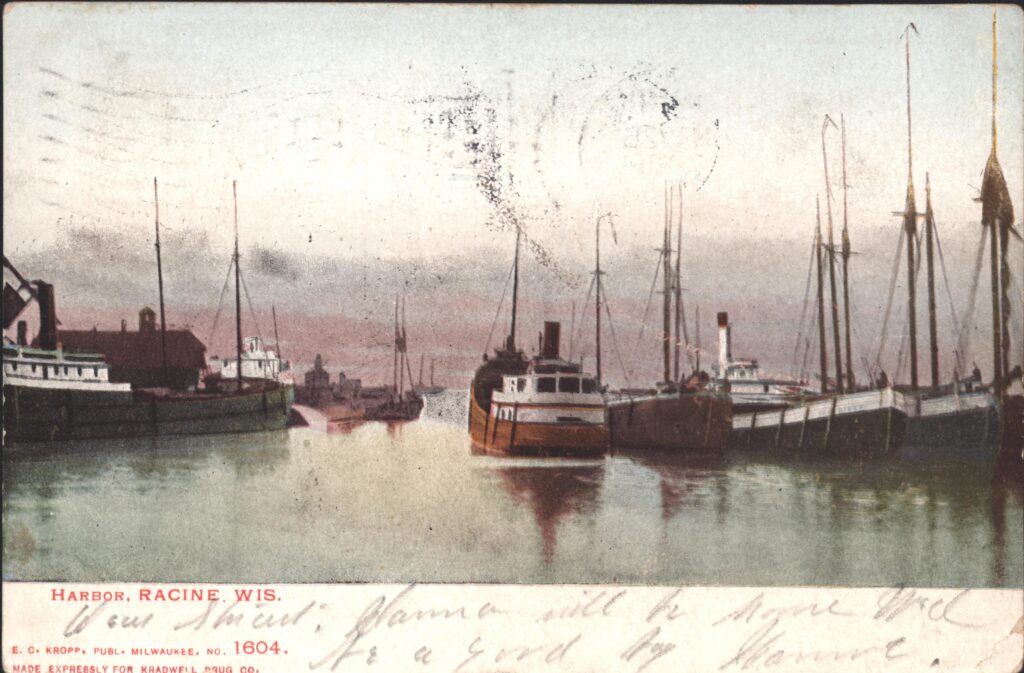
I’m going to attempt to transcribe the difficult cursive on the front:
“Dear [somebody], Mama will be home Wednesday. Be a good boy [somebody].”
What do you think? Can you make out the names in this sentence?
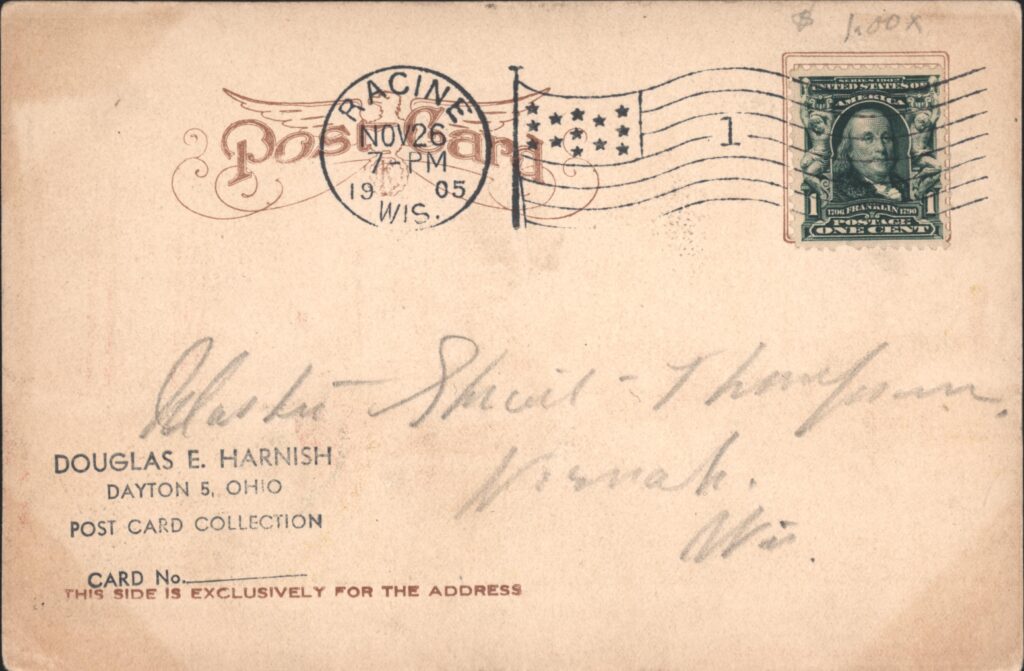
Martin S-something Thompson, Neenah, Wis.
1. Racine: Growth and Change in a Wisconsin County, edited by Nicholas C. Burckel
2. Racine: The Belle City, by Alice Sankey
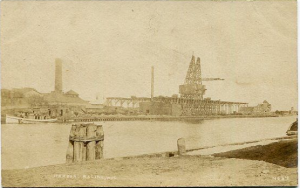
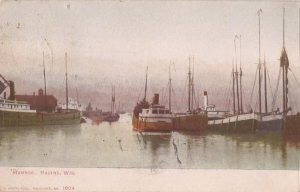
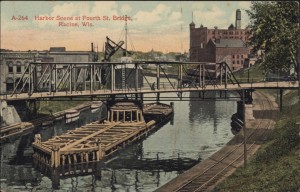
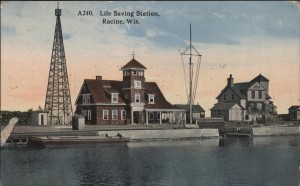
I am doing family history research. My great grandma’s grandpa owned a share in the J.S. Wallace schooner in 1868. George Chapman bought interest in the schooner. It was sold by Henry Roisey to George and William Boothroyd. George fell for William’s niece Hannah Boothroyd and they lived happily ever after, even though the ship sank twice. It was built at St. Joseph in 1853 and measured 57 tons. If you can point me in the direction of any scrap about the ship or people involved I would be grateful. I did find the 3 relatives headstones and William and George must have been buddies since they are buried next to each other.
Try this link:
http://greatlakeships.org/search, go to see Patrick Laverty Collections. If you can’t find give them a call… they are so helpful. I found all 3 of the schooners I was looking for 🙂
– Lisa